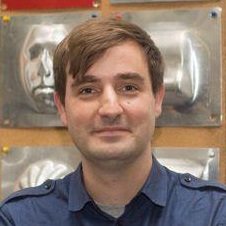Topic Menu
► Topic MenuTopic Editors


Numerical and Experimental Advances in Innovative Manufacturing Processes
Topic Information
Dear Colleagues,
The processing methods and systems used in the manufacturing of metallic components are in constant evolution, either through the optimization of classical techniques, such as applying them to new alloys, or through the promotion of new techniques that change the form of, join, add, or remove materials. In this Special Issue, we aim to collect a set of contributions in the referred fields, which include, but are not limited to, the following:
- Innovations and optimizations in classical processes: rolling, forging, sheet forming, machining, and casting processes;
- Additive manufacturing and joining technologies;
- Laser forming, hydroforming, incremental forming, and other innovative forming technologies;
- The evolution of material properties and constitutive modeling (including multiscale methods) under new manufacturing conditions;
- The design and behavior of innovative equipment and tools.
Papers reporting new and unpublished advances that concern either numerical advances or experimental techniques in any aspect of these topics are welcomed.
Dr. Ricardo J. Alves de Sousa
Dr. Mehdi Safari
Topic Editors
Keywords
- manufacturing processes
- experimental analysis
- numerical simulation
- metallic materials and their alloys
- sheet metal forming
- forging, rolling, and mass conformation
- joining techniques
- machining
Participating Journals
| Journal Name | Impact Factor | CiteScore | Launched Year | First Decision (median) | APC |
|---|---|---|---|---|---|

Alloys
|
- | - | 2022 | 15.0 days * | CHF 1000 |

Applied Sciences
|
2.7 | 4.5 | 2011 | 16.9 Days | CHF 2400 |

Journal of Manufacturing and Materials Processing
|
3.2 | 5.5 | 2017 | 14.2 Days | CHF 1800 |

Materials
|
3.4 | 5.2 | 2008 | 13.9 Days | CHF 2600 |

Metals
|
2.9 | 4.4 | 2011 | 15 Days | CHF 2600 |
* Median value for all MDPI journals in the second half of 2023.

MDPI Topics is cooperating with Preprints.org and has built a direct connection between MDPI journals and Preprints.org. Authors are encouraged to enjoy the benefits by posting a preprint at Preprints.org prior to publication:
- Immediately share your ideas ahead of publication and establish your research priority;
- Protect your idea from being stolen with this time-stamped preprint article;
- Enhance the exposure and impact of your research;
- Receive feedback from your peers in advance;
- Have it indexed in Web of Science (Preprint Citation Index), Google Scholar, Crossref, SHARE, PrePubMed, Scilit and Europe PMC.

